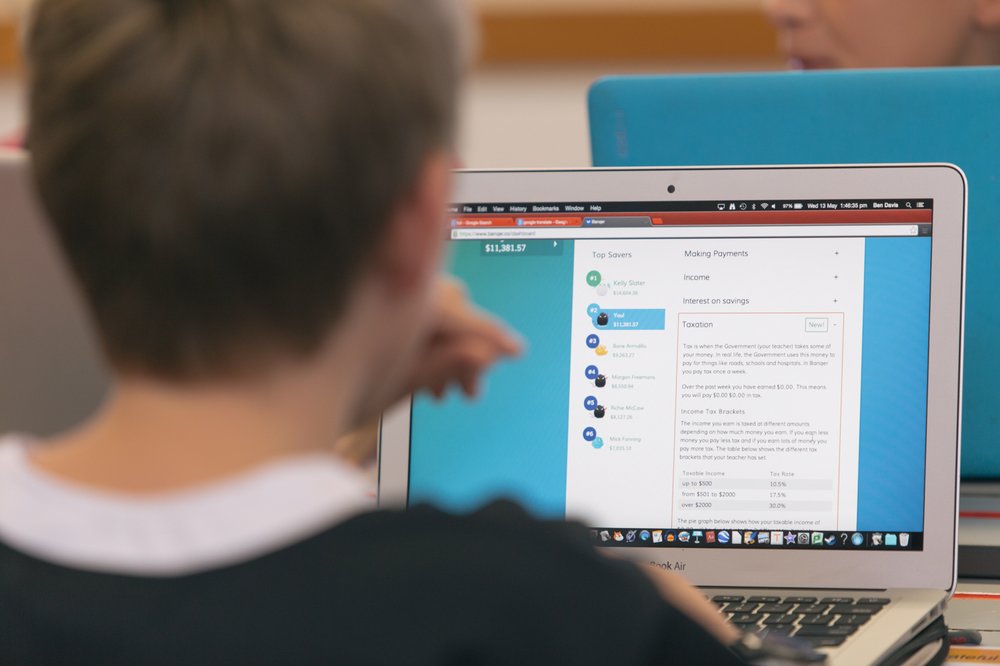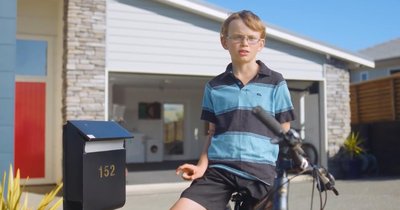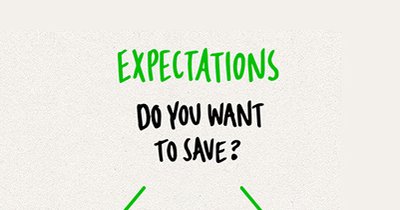Even just the words ‘Money Management’ can make adults squirm, yet Kiwi kids all over New Zealand are eagerly investing in housing, paying tax and calculating their compound interest. That’s because classrooms are jumping in to a gamified financial education platform, Banqer.
For many kids, money can be an abstract concept - they don’t see physical money often, or figure out which savings account will give them the most benefit. So, when Banqer founder Kendall Flutey set about designing her financial education platform, she knew she wanted to make use of something kids do understand: play.
By gamifying financial education, not only is Banqer making learning about money fun and tangible, it’s also helping embed good money habits.
Playing to learn
It’s a pretty popular way to engage people in a topic that they might not be so interested in otherwise, like Metro Trains Melbourne’s runaway success in transport safety. By utilising game like elements “such as leader boards and badges”, Denmark’s Interaction Design Foundation says “designers tap users’ intrinsic motivations so they enjoy using it”.
By tapping into emotions like surprise, anticipation, and pride; gamification is an extremely effective engagement tool that offers users a unique learning experience. Platforms utilising gamification give people control over their experience, provide a progress ‘map’, rewards ‘good behaviour’, and instils a sense of achievement. All this adds up to higher rates of engagement and loyalty.
Popular apps like Headspace and Duolingo owe their success to gamification – they provide an incentivised experience to motivate learning. Applying these same principles to financial education was a logical step for Banqer.
Currency gaming
Many online games already include some component of currency or finances. Tokens or coins maximise a character’s potential, enhance their abilities, or help them get to the next stage of the game. It’s a concept most of today’s Primary and Secondary schoolers have grown up with.
“I think that both gamification and simulative learning are powerful ways to more effectively educate students, in particular when it comes to practical skills.” Kendall says, “We didn’t intentionally base Banqer on any one form of existing gamification, but instead followed a natural link between money and gamified learning that exists in a lot of places,”
But they’re careful how they do it, as there needs to be a clear line between where gamified education becomes a game. They’re not creating a platform to entertain; Banqer’s ultimate goal is to help kids understand finances.
“The great thing about it [gamification] is you don’t need to go overboard and gamify every aspect of an educational platform. But, when done tastefully and respectfully it really enhances the experience,” says Kendall.
Getting your mouse around credit scores
With its bright colours, cute icons and threats of desk tsunamis; as soon as you take Banqer for a spin you’ll see the natural parallels to the platform and a game. But a clear example of where gamification is a conduit to learning is shown in how Banqer tackles the complex world of credit.
In the credit reporting module students start with a credit score of 500, which increases or decreases depending on the financial decisions they make. Kids can take out simulated personal loans and mortgages, learn about the importance of meeting repayments, and understand the real-life implications of their decisions. They’re given incentives to increase their credit score, encouraging them to manage bill payments successfully and get more hands on in money management (no burying their heads in the sand for these money-savvy Banqer kids).
“We offer advice on how a student can improve their credit score and also offer the teacher the option to turn on leader boards. This shows a student how their current credit score is relative to their class, their school, and even the nation,” says Kendall.
But it’s okay to make mistakes in Banqer, and for kids to see their credit scores drop due to ‘bad’ financial decisions. It illustrates how easy you can get into debt, and that borrowing isn’t always the best option. And because it’s a simulated environment, there are no real costs involved and kids can always rectify their credit score.
Credit-worthiness, loan and mortgage repayments are serious subjects for kids to be tackling. They may be simulated, but are kids being overburdened with the realities of real life too early?
Starter pack for life
Kendall doesn’t think so. With the world around them becoming increasingly cashless, Banqer is the perfect training ground to prepare kids for the unavoidable reality of credit.
“Kids take to credit reporting and credits cores really well. Increasing a score and levelling up isn’t a new concept for them.” She says, “We just overlay this with personal finances and they grasp that really quickly. I think Banqer kids prove that when you’re aware of it [credit scores], you can master the concept fairly quickly.”
Even parents logging in through the Parent Portal will notice it’s not too dissimilar from the digital direction the financial system is heading in. For future generations to successfully navigate our rapidly changing financial landscape, it’s essential that they’re immersed in this environment now. Banqer doesn’t downplay the challenges that lie ahead for our children. Instead, gamified financial education is providing Kiwi kids with a starter pack for a game of life that is going to be very different from ours.
Read how Kiwibank and Banqer are working together to support the next generation of Kiwis at banqer.co, and see how you can get Banqer’s interactive financial literacy programme into a classroom you care about.



